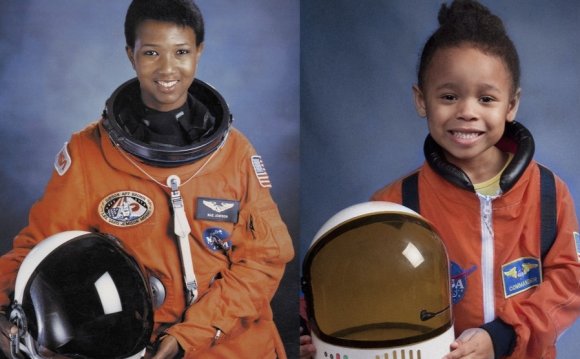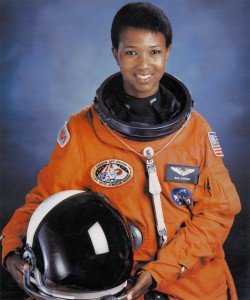
 FORT GEORGE G. MEADE, Md. (AFNS) - The shortest distance between two points is a straight line.
FORT GEORGE G. MEADE, Md. (AFNS) - The shortest distance between two points is a straight line.
However, going from a small town in Alabama to miles above the surface of the earth required a few stops along the way for Dr. Mae Jemison, who was the first African American woman accepted to the NASA astronaut program.
Born Oct. 17, 1956, in Decatur, Ala., and raised in Chicago, Jemison was a studious child, spending hours in the school library reading about astronomy and other sciences. Her parents – a carpenter father and teacher mother – encouraged her curiosity, even allowing her to study pus when she got an infection from a splinter.
“It sounds a little gross, but I was fascinated with pus, ” Jemison said during a 1996 interview with “Stanford Today.” “I ran and showed it to my mother and she was telling me it was pus. I was like, ‘Well, what is that?’ And I ended up doing this whole project, reading about pus.”
This desire to learn about nature and how it all fits together eventually led her to pursue a degree in chemical engineering from Stanford University, which she started at 16 years old in 1973. By 1981, Jemison had her Doctor of Medicine degree from Cornell Medical College.
During her time at medical school, she traveled to countries like Cuba, Thailand and Kenya to provide medical care, so it was no surprise that after she finished her internship at Los Angeles County-USC Medical Center, she joined the Peace Corps as a medical officer. Her position took her to Liberia and Sierra Leone, as well as gave her an opportunity to work with the Center for Disease Control. Through all of this, she was continuing her childhood desire of learning about how the world works.
It wasn’t until 1992, however, that another childhood desire was achieved: she launched into orbit above the earth aboard the space shuttle Endeavour. Inspired by the “Star Trek” character Lt. Uhura, played by actress Nichelle Nichols, Jemison always thought she’d go into space. She was so determined, in fact, that even though her first application to NASA was turned down in 1983, she reapplied in 1987. After being selected for the astronaut program upon her second try, she was assigned to launch support activities at the Kennedy Space Center, Fla.
After working on the ground for five years, Jemison was finally sent into space as the science mission specialist on STS-47 Spacelab-J mission from Sept. 12-20, 1992.
“The first thing I saw from space was Chicago, my hometown, ” Jemison said in a 2003 interview with the “New York Times.” “I was working on the middeck where there aren’t many windows, and as we passed over Chicago, the commander called me up to the flight deck. It was such a significant moment because since I was a little girl I had always assumed I would go into space.”
This mission made Jemison not only the first African American woman accepted to the astronaut training program, but also the first to travel in space. She highlighted this fact, according to Doris L. Rich, the biographer of Bessie Coleman, by bringing a photo of Coleman with her into space. Coleman was the first African American woman to fly an airplane in the U.S.
Although she helped make significant advancements for both women and African Americans in space-related science and travel, Jemison left NASA in March 1993. Not one to rest on her laurels, she went on to become a college professor; found an international science camp; advocate for education and healthcare in Third World countries; and push for science and technology to enhance daily life.









